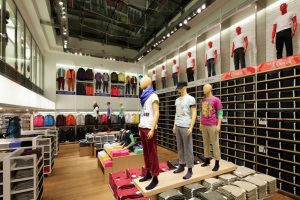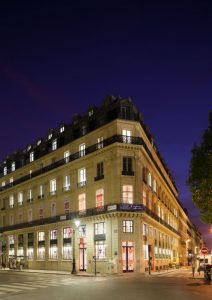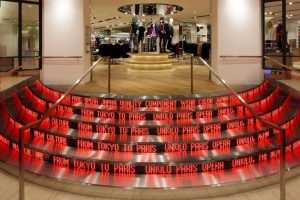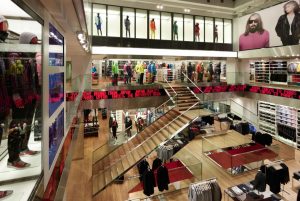When Uniqlo first began to gain international awareness during the last decade, it was being called “the Gap of Japan” for its affordable fashion-forwardness, its private label strategy, its use of celebrity spokespersons and its bright, shoppable, cookie-cutter store design.
But the two retailers have been going in very different directions. While the beleaguered Gap has been retrenching, Uniqlo has solidified its position as Japan’s leading retail chain (in terms of both sales and profits) and is in the midst of an aggressive international expansion. It opened a flagship store in New York, has announced plans to expand into Great Britain, Spain and Italy and, last fall, opened its Paris flagship store to much fanfare.
The Paris version isn’t just another cookie-cutter store. The three-story, 23,000-square-foot space, much larger than the retailer’s normal boutiques, is in an 1866 building next to the city’s ornate, Beaux Arts-era Opera House.
Of course, dealing with 19th Century buildings means historical preservation issues. “Two elements of the original building had to be retained,” says Jean Shein, director of integration in the Paris office of parent company Fast Retailing Ltd. (Tokyo). “Both the façade on the ground floor, with windows covered by thick metal bars, and an interior stairway were regarded as of historical importance and could not be touched.”
But Uniqlo stores are in the hands of Masamichi Katayama and his Tokyo-based Wonderwall design firm, which are accustomed to interpreting the retailer’s brand, no matter the spatial challenges. So both historically important elements were handled as opportunities to showcase the Uniqlo design approach, a contrast between old and new, classical and functional.
“The Uniqlo brand is about high quality, reasonable pricing, functionality, service, color, style and technology,” Shein says. “It is accessible and democratic, organized and intelligent, always looking toward the future and challenging conventional wisdom.”
In the case of the façade and the closed-up, 150-year-old window openings, LED lighting turned each window into a light box with mannequins illuminated with changing background colors.
The staircase, fashioned with mirror finishes, stainless steel and glass, accentuates the dramatic height of the space, from the basement level to large skylit atriums.
The large scale of the store is a break for Uniqlo from mostly smaller spaces – and a big breakthrough in a city known for intimate boutiques. But Shein feels the merchandising and material choices retain the retailer’s customary warmth. “The large, open spaces gracefully balance wall units packed with product,” he says. “And the use of stainless steel and glass with natural wood flooring ensures that the store does not feel institutional.”
Advertisement
He also credits Katayama, who’s been described as “a master at making a vast space appear smaller,” for organizing the space in a hyper-rational manner to maximize its efficiency. “It may seem smaller in some areas, where there’s a heavy volume of product,” says Shein. “However, that’s contrasted with large spaces that are often showcases for other product, such as our men’s denim wall.”
The wide-open main floor revolves around the staircase. Dramatic sightlines afford views not only around the store but also up into the atrium level, dominated by large graphics of models and colorful floor-to-ceiling perimeter displays. An LED display runs around the perimeter of the central atrium, calling out phrases like “Japan Quality” and “Mega Culture.”
The success of the Paris store, which enjoyed the best first month of any Uniqlo store in the world, will kick off a European expansion, including six more stores in central Paris. Which suggests another major challenge: bringing disposable fashion to the most fashion-conscious city in the world.
“Parisians have reacted quite well to Uniqlo,” Shein says. “You hear about Parisian aloofness and reluctance to try new things. But you can see the change in the streets, with spots of color among the sea of traditional black, gray and navy.”
Uniqlo has also tapped into Parisians’ sense of history to choose its locations. Earlier last year, it dropped a temporary pop-up store in the heart of the Marais district in a former art gallery that once served as the headquarters of the Paris-North Liberation movement of the French Resistance during the Nazi occupation. Time will tell where the next store is located. As the retailer says, it blends the old and the new.
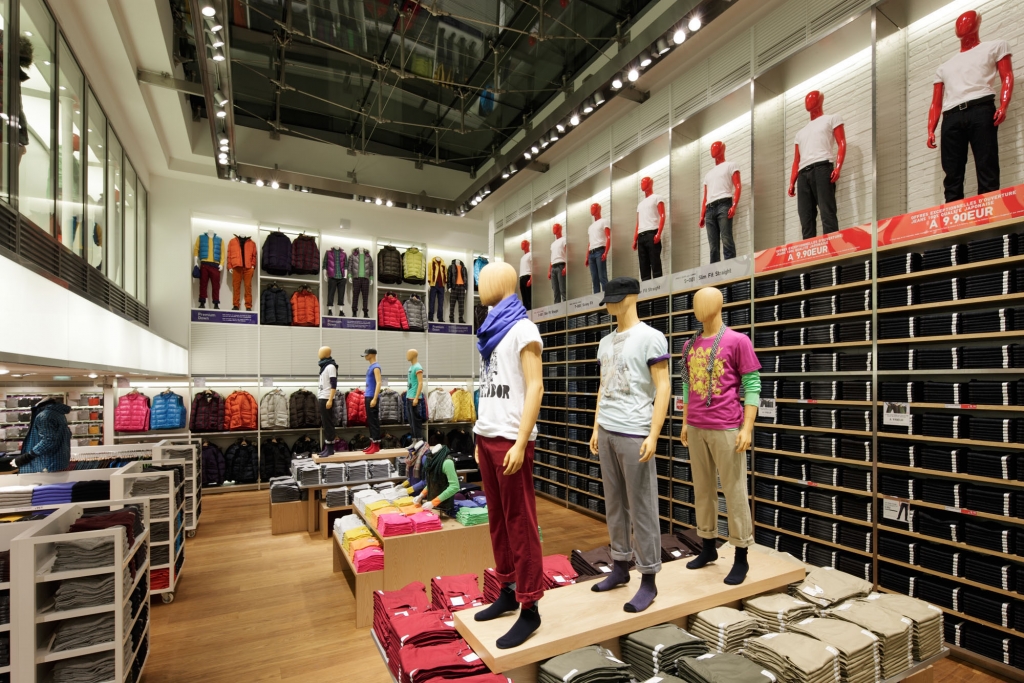

 Headlines1 week ago
Headlines1 week ago
 Photo Gallery22 hours ago
Photo Gallery22 hours ago
 Headlines2 weeks ago
Headlines2 weeks ago
 Headlines2 weeks ago
Headlines2 weeks ago
 Sector Spotlight1 week ago
Sector Spotlight1 week ago
 Headlines1 week ago
Headlines1 week ago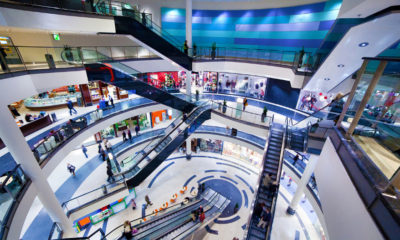
 Headlines2 weeks ago
Headlines2 weeks ago
 Headlines1 week ago
Headlines1 week ago
